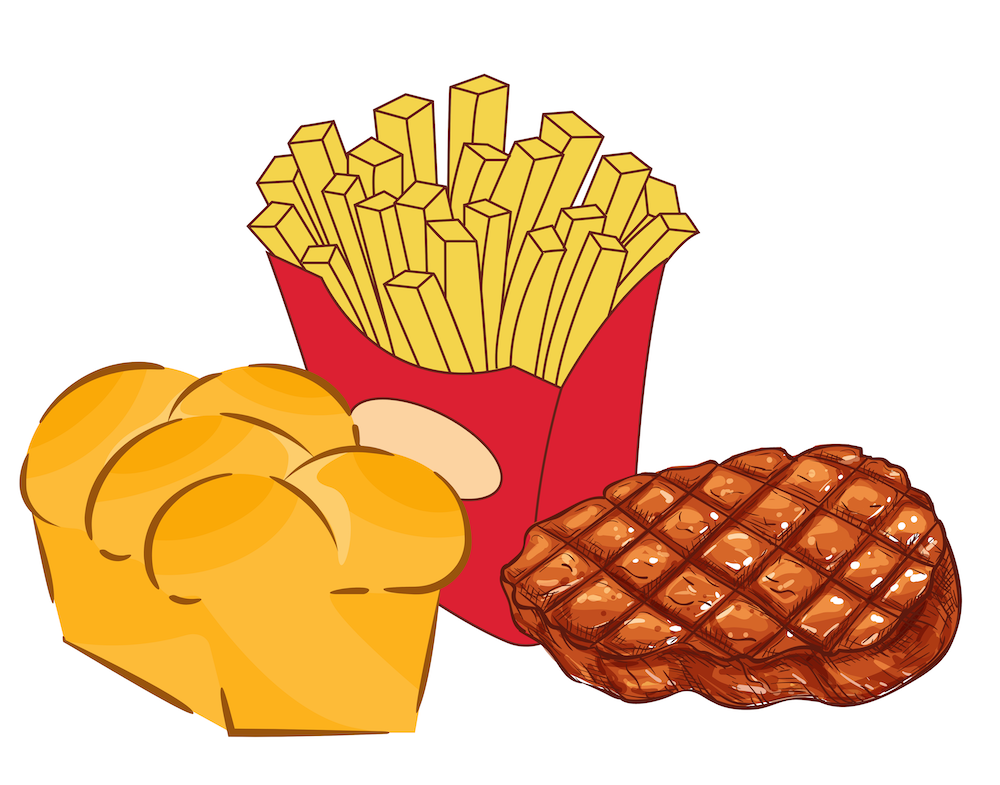by Siena Mantooth

Crispy french fries, toasted brioche rolls, seared steak – what makes all these foods taste incredible? The Maillard (“my-ard”) reaction. This reaction, named after the French chemist Louis Camille Maillard, who first published about it in 1912, gives food its brown color and an abundance of flavor.
In the most basic understanding of the Maillard reaction, sugar present in the food reacts with amino acids (the building blocks of proteins) to form molecules called glycosylamines. Glycosylamines are not stable molecules and are easily converted to ketosamines in a process called a chemical rearrangement. These ketosamines can then react to form countless different molecules, which can set off a cascade of other reactions. Some products of the Maillard reaction include melanoidins, which make the food appear brown, furanones, which provide a sweet caramel flavor, and pyrazines, which give foods a roasted flavor.

The different reactions that occur vary based on the chemical composition of the food as well as the cooking time, temperature, pH (acid or base levels), and method. The food industry plays around with these components of chemicals, temperature, pH, and cooking time to create different flavor profiles in a variety of foods. For example, cooking meat with dry heat (grilling, frying, roasting) leads to more Maillard reaction products than boiling. Additionally, adding sugars to meats prior to cooking also results in more Maillard reactions. Maillard reactions occur everywhere in the food industry – even coffee undergoes Maillard reactions during roasting!

To observe the Maillard reaction in your own kitchen, keep in mind these points:
- In order for Maillard reactions to occur, the temperature must be above 285°F (140°C), and temperatures that are too high lead to a more bitter taste. Hence, recipes most often require an oven temperature of at least 350°F for baked goods.
- Water plays a conflicting role in the Maillard reaction. Too much water inhibits the reaction, but too little water concentrates the reactants and prevents them from moving to react with each other. Having an “intermediate” amount of water is best for the reaction, which often means drying out veggies before roasting them in the oven.
- Furthermore, higher acidity / lower pH environments (lemons and limes are highly acidic foods) decrease the likelihood that the reaction will occur, so adding baking soda (an alkaline agent) can help the browning process.
The Maillard reaction does lead to the by-product acrylamide, which is a suspected carcinogen. It is currently unknown whether exposure to acrylamide in your diet can directly cause cancer. One way to reduce the formation of acrylamide is to reduce the cooking time.
Knowing the science of cooking gives you the skills to roast perfectly browned vegetables (air dry or sprinkle a bit of salt to dehydrate them), grill a mouthwatering steak (add a dash of baking soda to increase the pH), or bake a scrumptious loaf of bread (brush egg wash on top to add amino acids). You are a scientist when you are in the kitchen.
